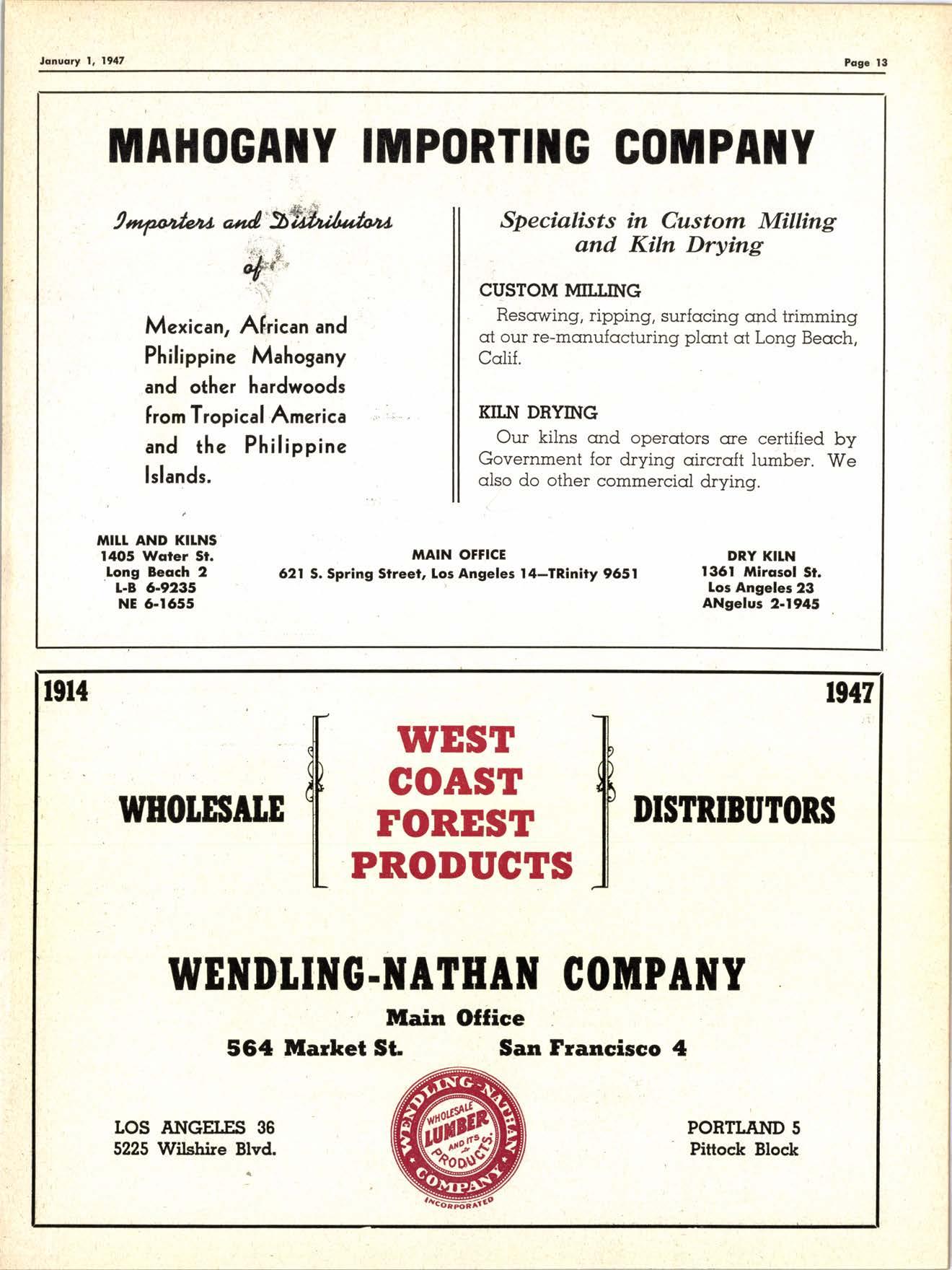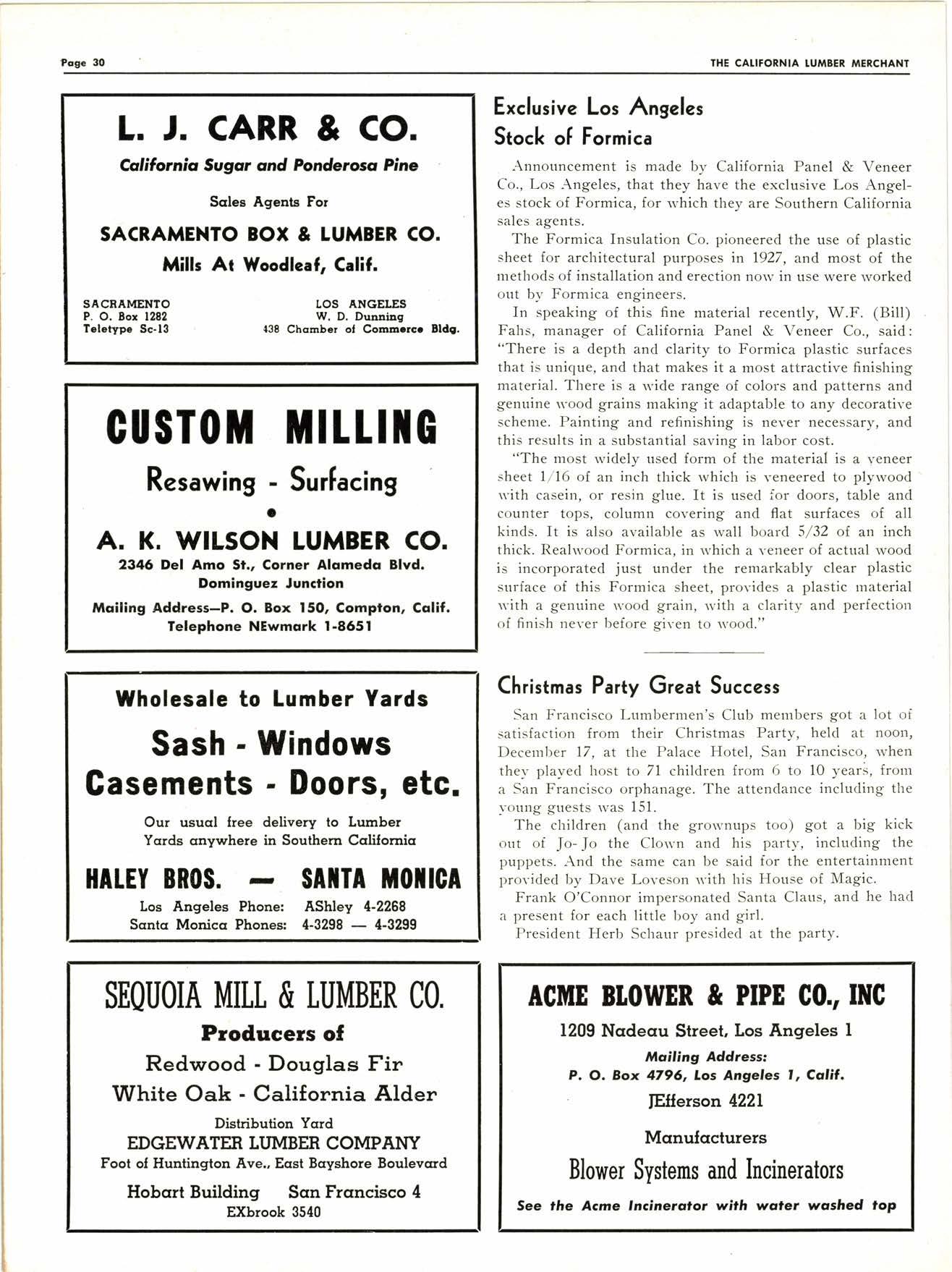
2 minute read
Announces Ne* Housing Permit System
Washington, Dec. 23.-Housing Expediter Frank R. Creedon announced details today of the nerv housing permit system to go into efiect toniorrow under the President's relaxed housing program.
Mr. Creedon said these conditions rvill apply to all nerv housing:
1. Livable floor space cannot exceed 1,500 square feet.
2, Only the number of fixtures normally needed to equip one bathroom can be used.
3. The drvelling must be intended for year-round occupancy.
4. Builders of dwellings for sale are required to hold them 60 days for veterans; rental properties must be held 3O days for veterans.
5. The rent to be charged for new dwellings for apartments may not average more than $80 per month for any project. Serr.ice charges may not exceed $3 per month.
The new system'does away entirely with the previous $10,000 ceiling en new homes. It also permits nonveterans to build for their own occupancy.
The housing permits will be issued through state and district ofifices of the Federal Housing Administrator starting tomorrow. Priorities previously issued must be honored by dealers even though used after Dec. 24. No new priorities rvill be issued after that date.
The permit order provides that a veteran who u'ishes to make alterations or repairs costing up to $10,000 on a home, is eligible for a permit. The $,100 limit on alterations and repairs for which no permit is necessary, will be continued.
Construction costs not exceeding $1,500 per additional person sheltered are authorized for added rooms to house the veterans or members of the applicant's family.
Under the previous housing program the average home built ranged from 600 to 1,100 square feet.
There is nothing in the regulation to keep builders from "roughing in" unfinished bathrooms to be equipped later.
A $3 per room per month service charge on rental units is a maximum. The exact charge, which is to cover such costs as heat, water, light and janitorial service, is to be set on each project separately.
Mr. Creedon also stated that allocation of fir'e rarv materials to producers of building materials probably 'n'ould continue through the first quarter of 1947. These are steel, pig iron, phenolic resins, paper liner and shop grade lumber.
Melville G. Eshmcn
Melville G. Eshman, 82, president of the KerckhoffCuzner Mill & Lumber Co., and active in many Los Angeles enterprises for sixty-four years, passed away on December 18.
Mr. Eshman l\ras born in Terre Haute, Indiana, and after graduation from the University of Indiana, came to California in 1883. He resided in Los Angeles ever sinde, and his first business connection was with KerckhoffCuzner. He lvas a member of the California Club and Beach Club.
He leaves a daughter, Mrs. Rudolph Liebig, two grandchildren, and trvo sisters, Miss Josephine Eshman and Miss Cora Eshman. Funeral services were held December 2r.
Chcrrles F. Fischer
Charles F. Fischer, a colorful personality of old San Francisco, passed away in San Francisco, on his rvedding anniversary, December 13, at the age ol 92.
He was president of the California Sau' Works, rvhich burned to the ground in the fire of 1906. He rebuilt the business in one of the first structures constructed in the burned-out area on Brannan Street. He had been retired for N years at the time of his death.
Mr. Fischer \vas the husband of .the late Annie E. Fischer, father of G. Irving Fischer; Mrs. Lillian F' Elliott, Los Angeles, and Mrs. Mary Mattson, San Francisco. He is also survived by two grandchildren, Charles W. and George I. Fischer, Jr. of Los Angeles, and two great-grandchildren.
Funeral services 'n'ere held in San Francisco, December 16.










